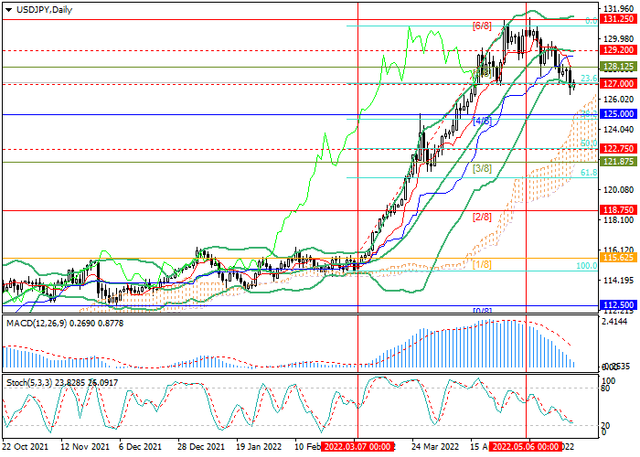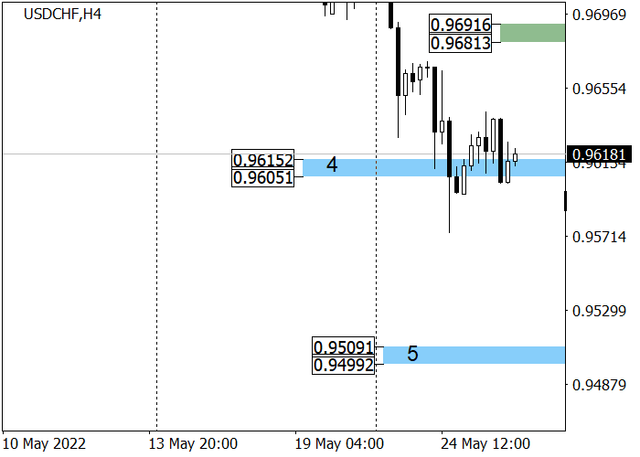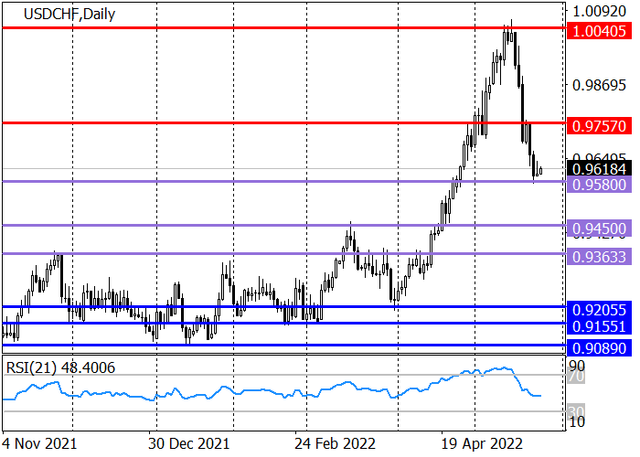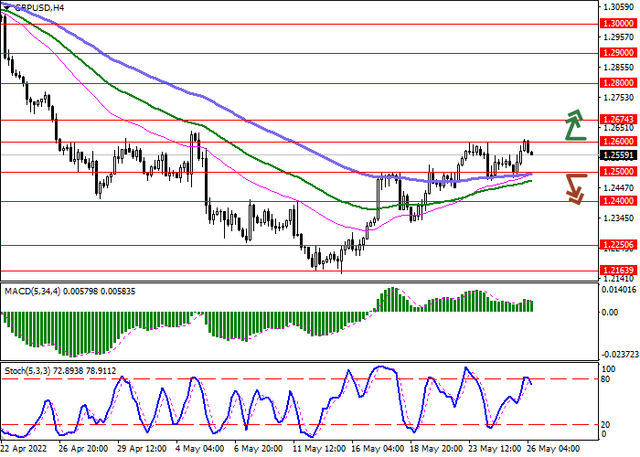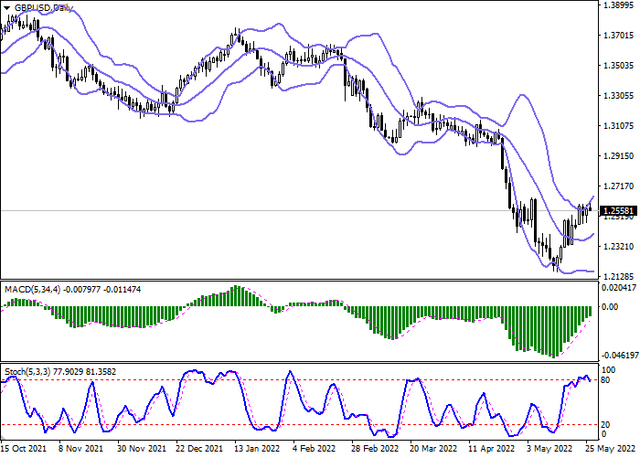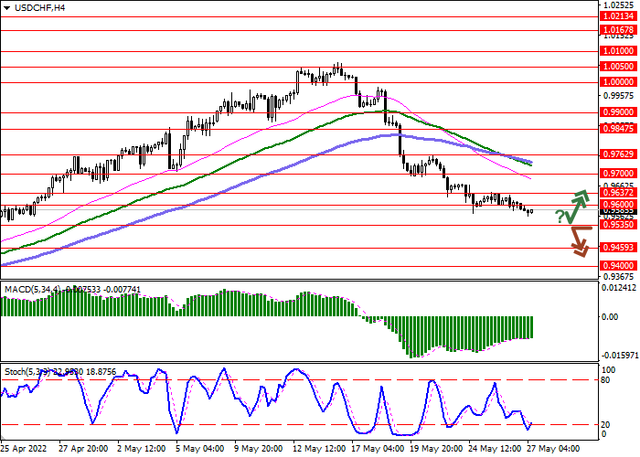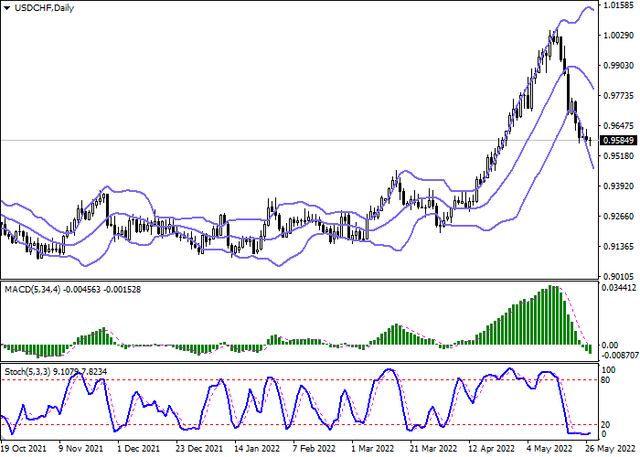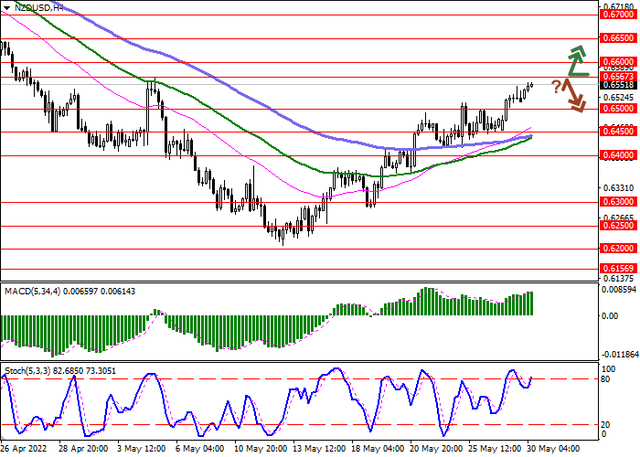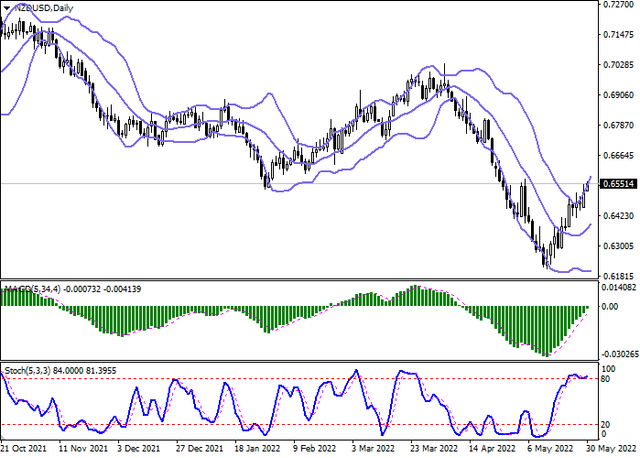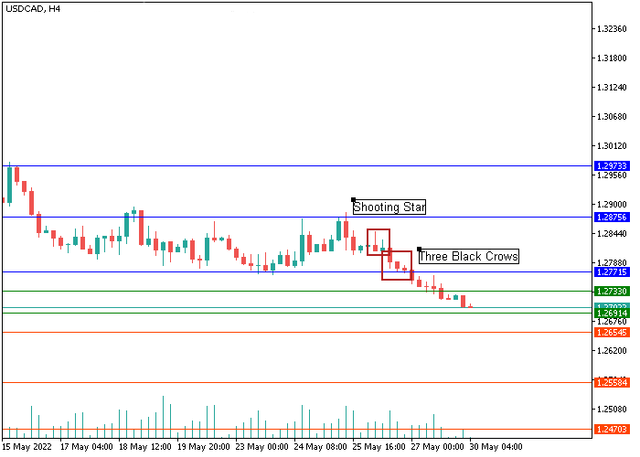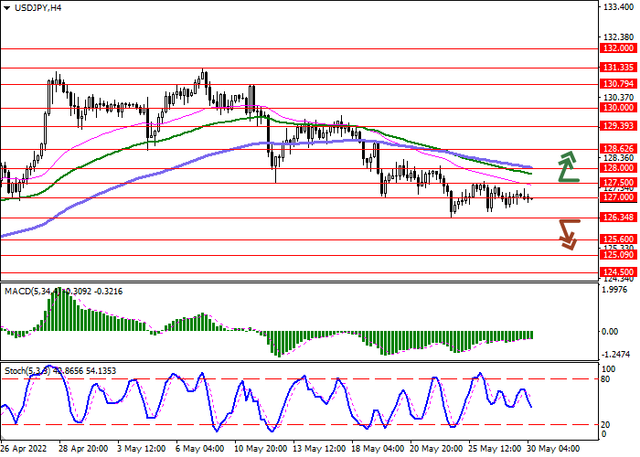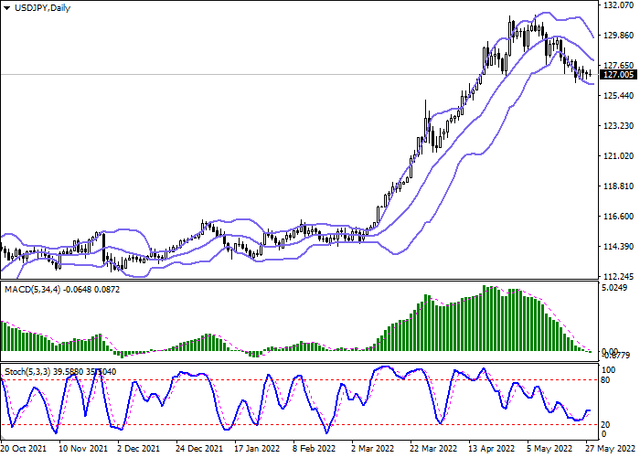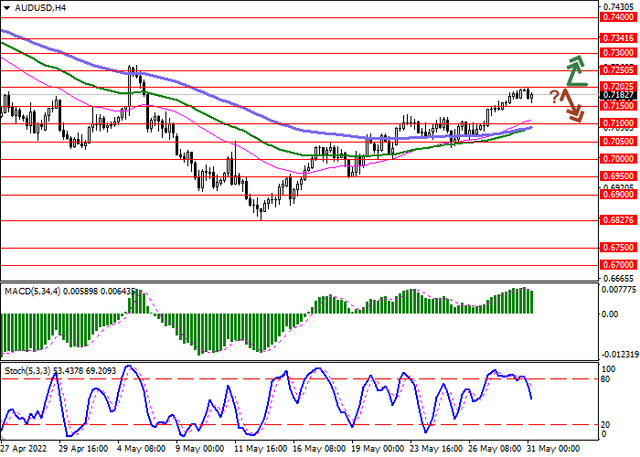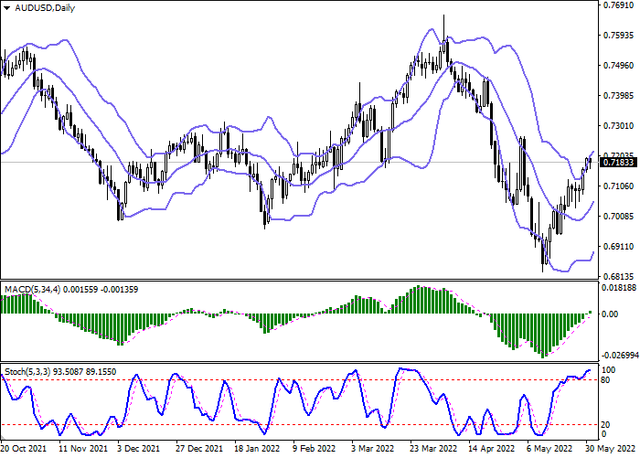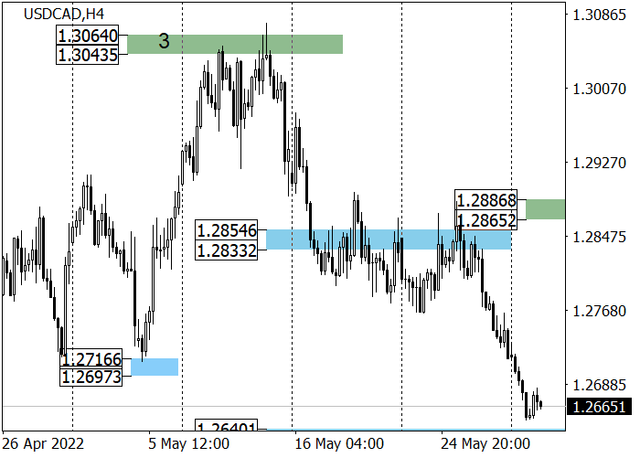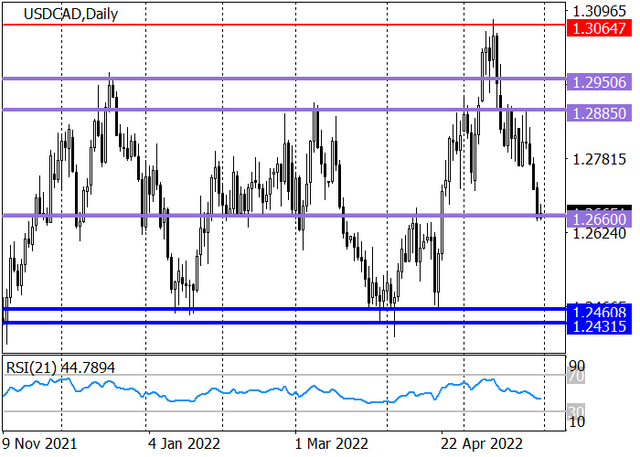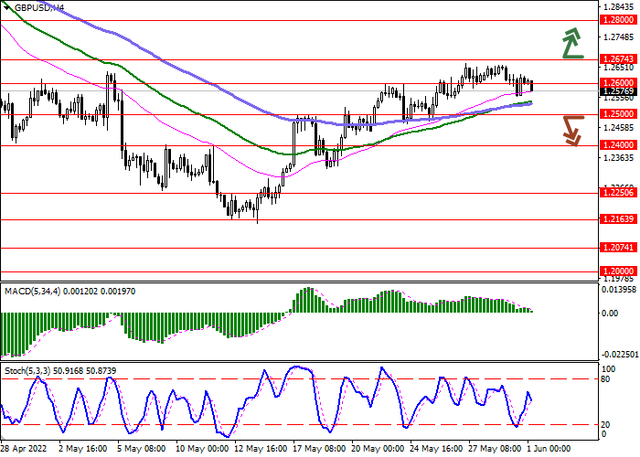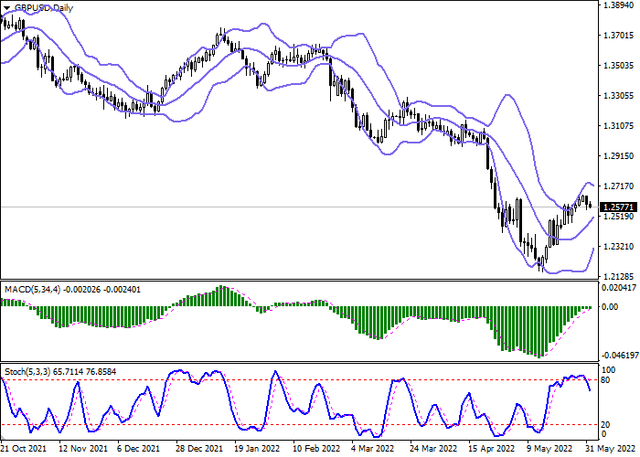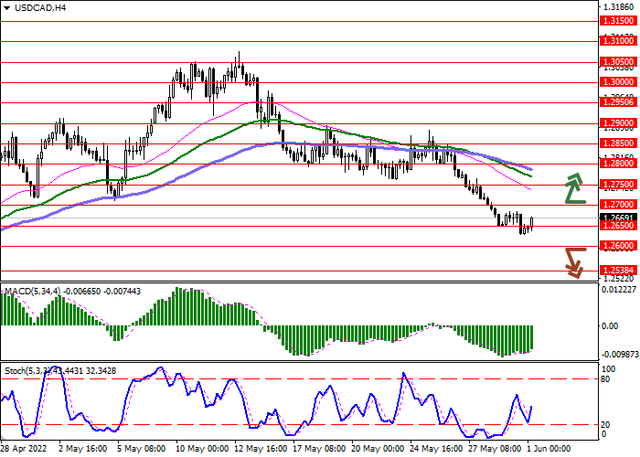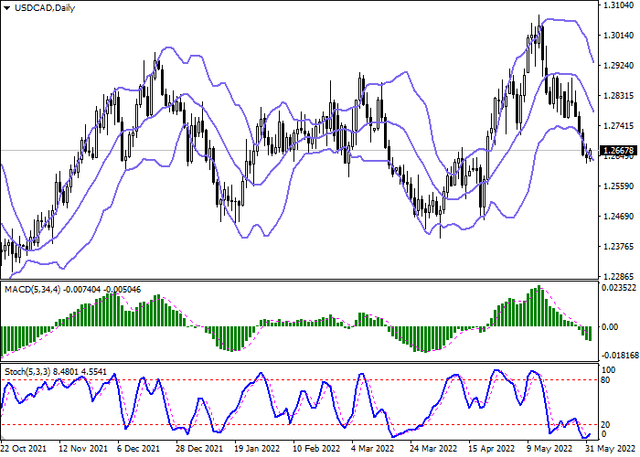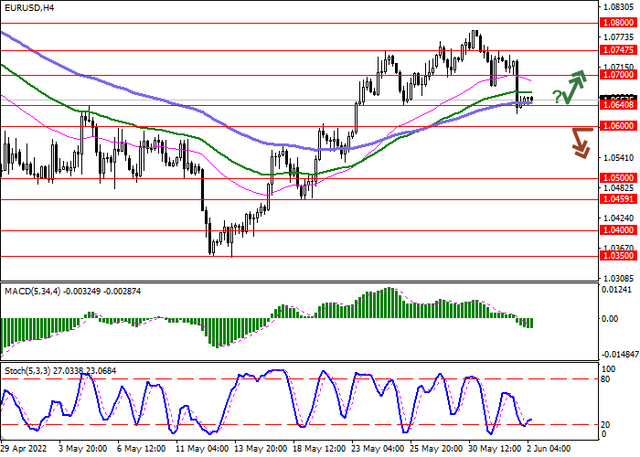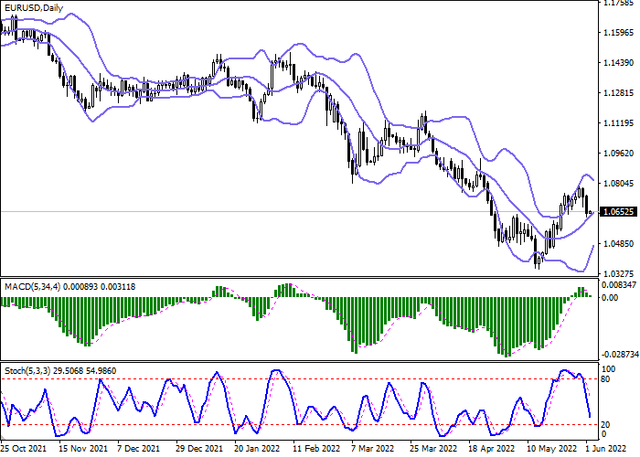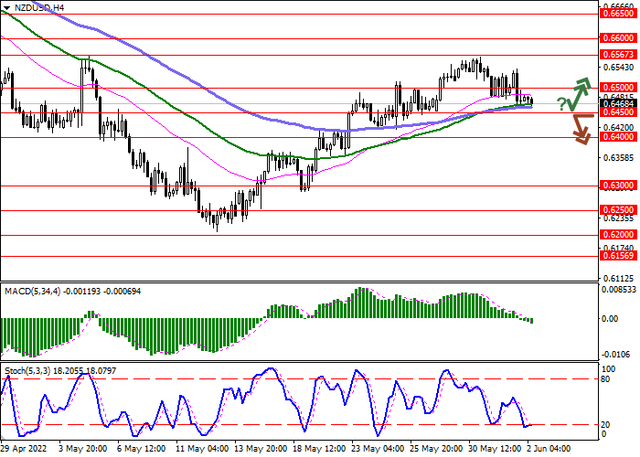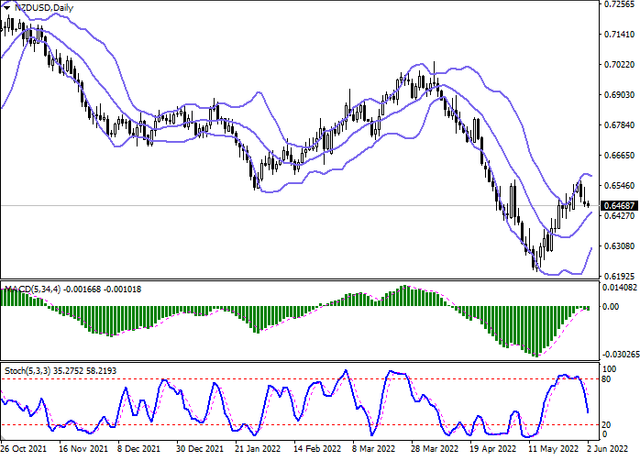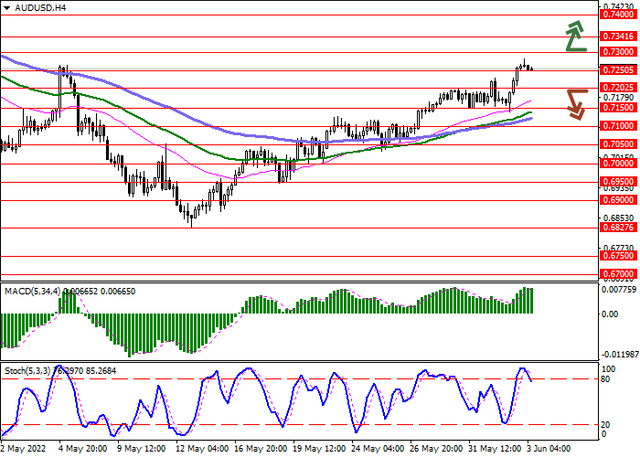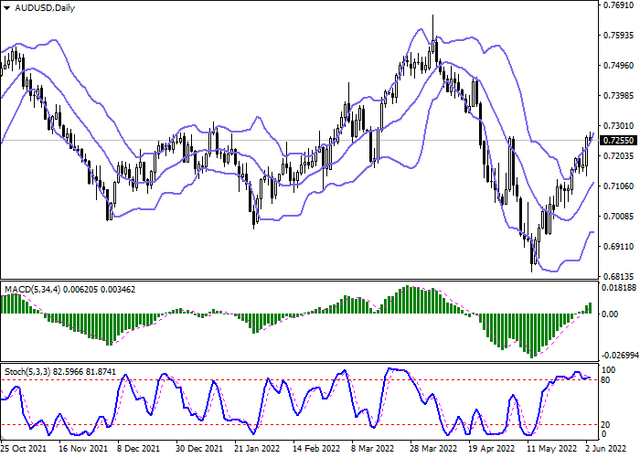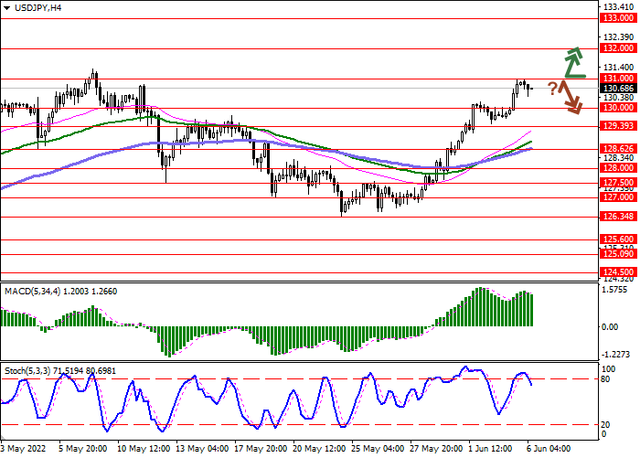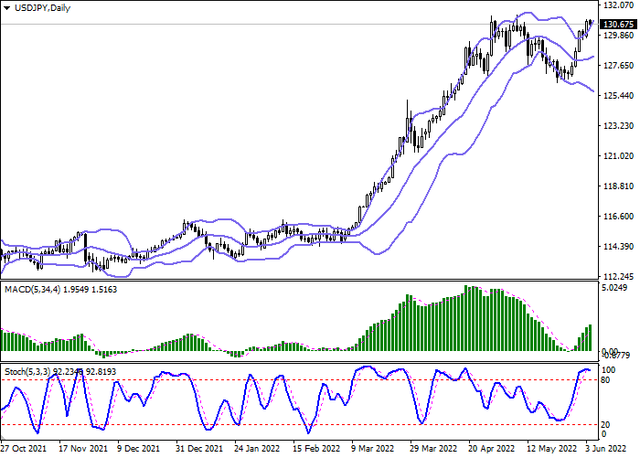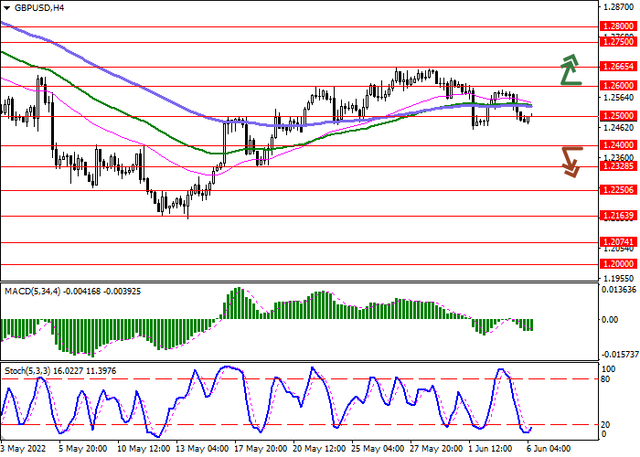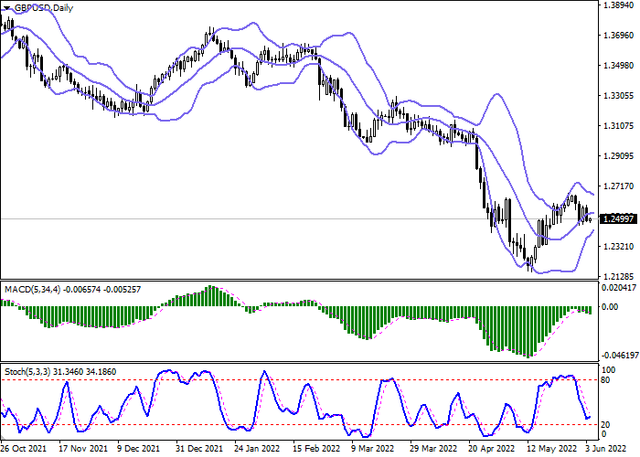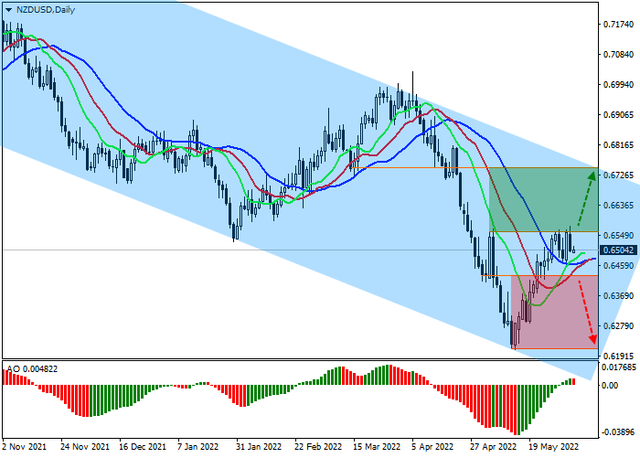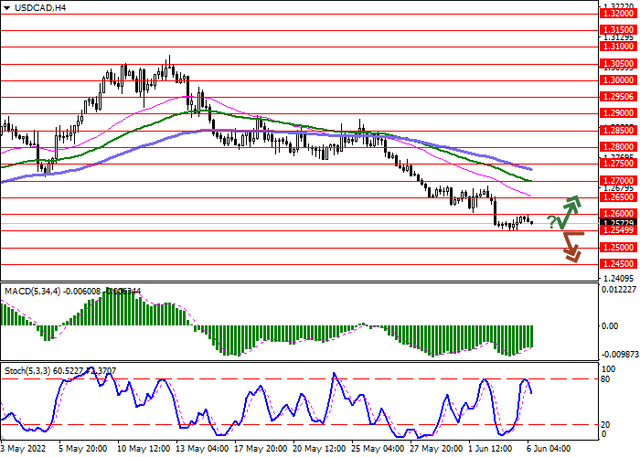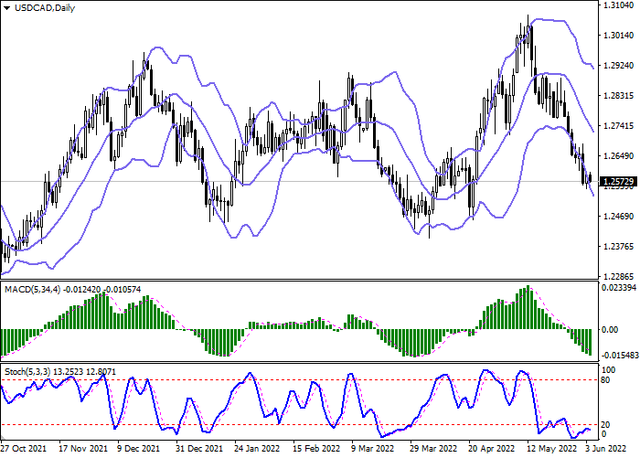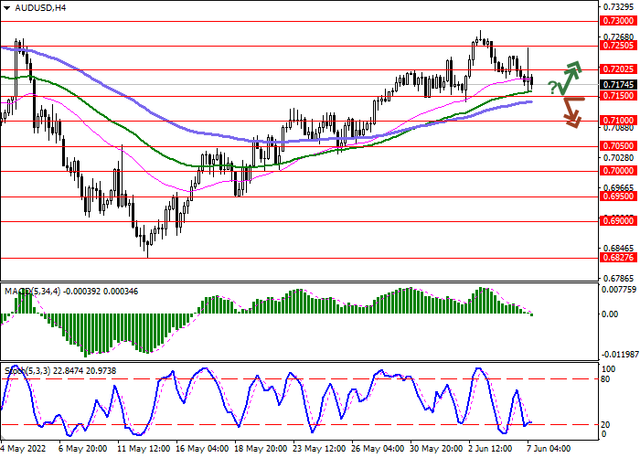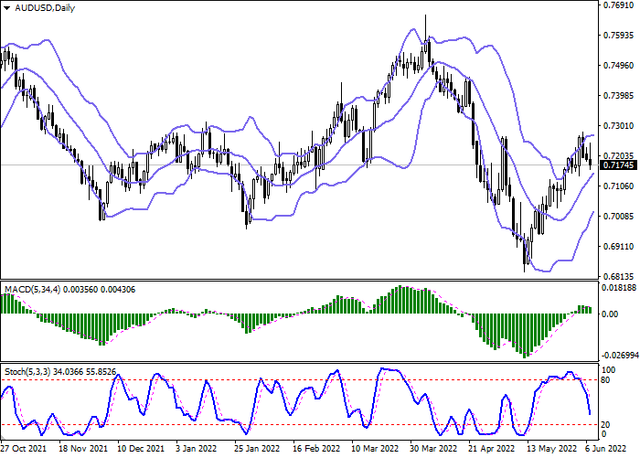SOLIDECN
Senior member
- Messages
- 3,041
- Likes
- 0

The European currency shows a slight decrease against the US dollar during the Asian session, correcting after the "bullish" start of the week, which led to the renewal of local highs for the instrument from April 25. Quotes are still supported by the moderate weakness of the dollar, which reacts negatively to the publication of mixed macroeconomic statistics. In addition, investors positively assessed the rhetoric of the President of the European Central Bank (ECB) Christine Lagarde, who actually announced the imminent completion of the quantitative easing program and a possible increase in interest rates by 50 basis points in July.
Traders also assess the statement of the President of the European Commission, Ursula von der Leyen, who announced a number of steps to reduce the EU's dependence on Russian energy resources. The authorities intend to accelerate the transition to "green" energy, increasing the current target values from 9% to 13% by 2030. In particular, the construction of solar roofs in new buildings is proposed. About 300 billion euros will be needed for energy reforms, of which about 72 billion euros will be grants and 225 billion can be obtained in the form of loans. Up to 2 billion euros will be needed for oil infrastructure, taking into account the cessation of shipments of Russian oil.
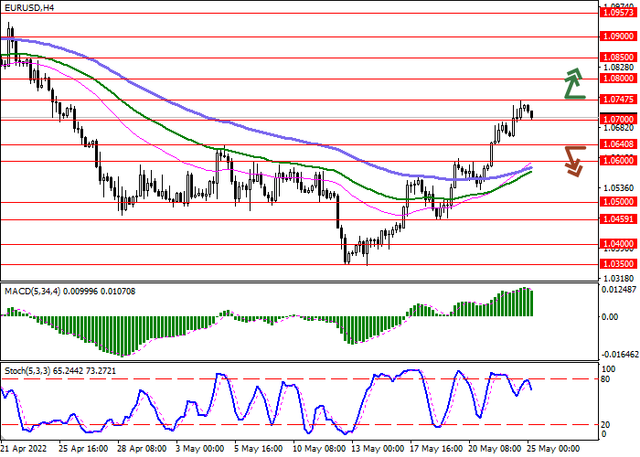
Meanwhile, macroeconomic statistics from the euro area, released the day before, turned out to be negative. Markit Services PMI fell from 57.7 to 56.3 points, which turned out to be worse than market expectations for a reduction to 57.5 points. Composite PMI fell from 55.8 to 54.9 points, which also turned out to be weaker than market forecasts at the level of 55.3 points.
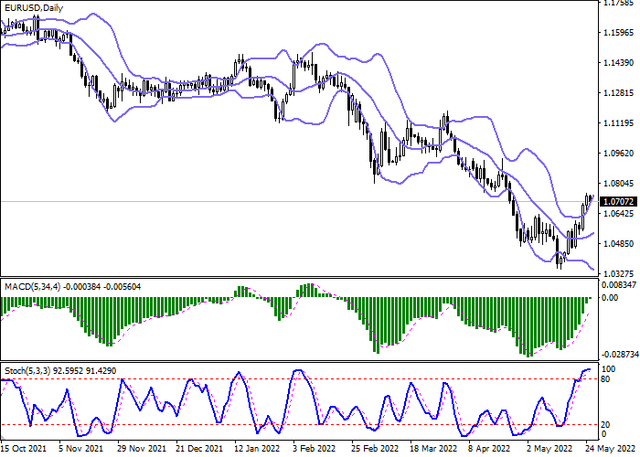
Bollinger Bands in D1 chart show moderate growth. The price range is expanding but it fails to conform to the surge of "bullish" activity at the moment. MACD grows, preserving a stable buy signal (located above the signal line). The indicator is trying to consolidate above the zero level. Stochastic, having reached its highs, reversed into a horizontal plane, indicating overbought EUR in the ultra-short term.
Resistance levels: 1.0747, 1.08, 1.085, 1.09 | Support levels: 1.07, 1.064, 1.06, 1.05


